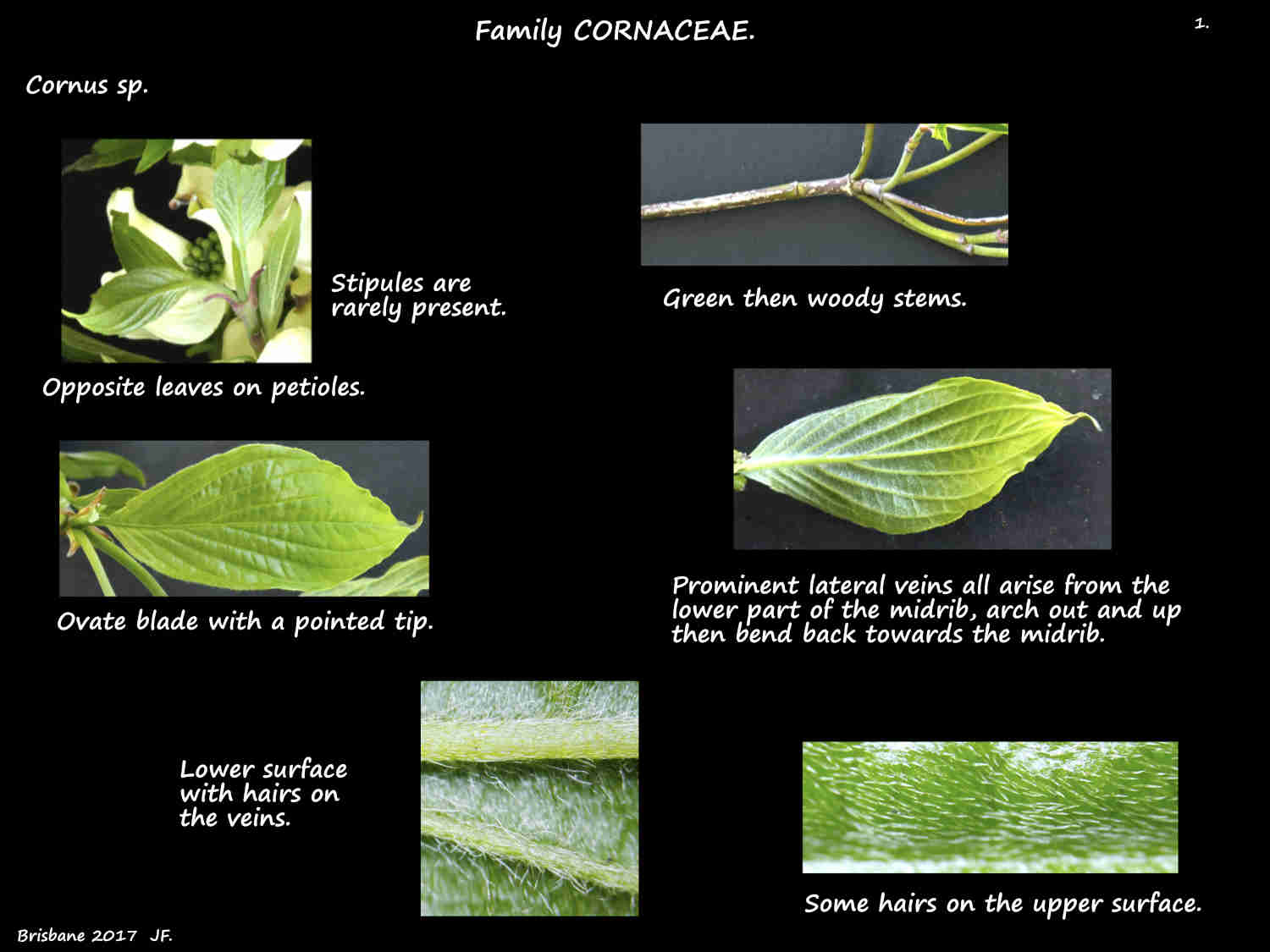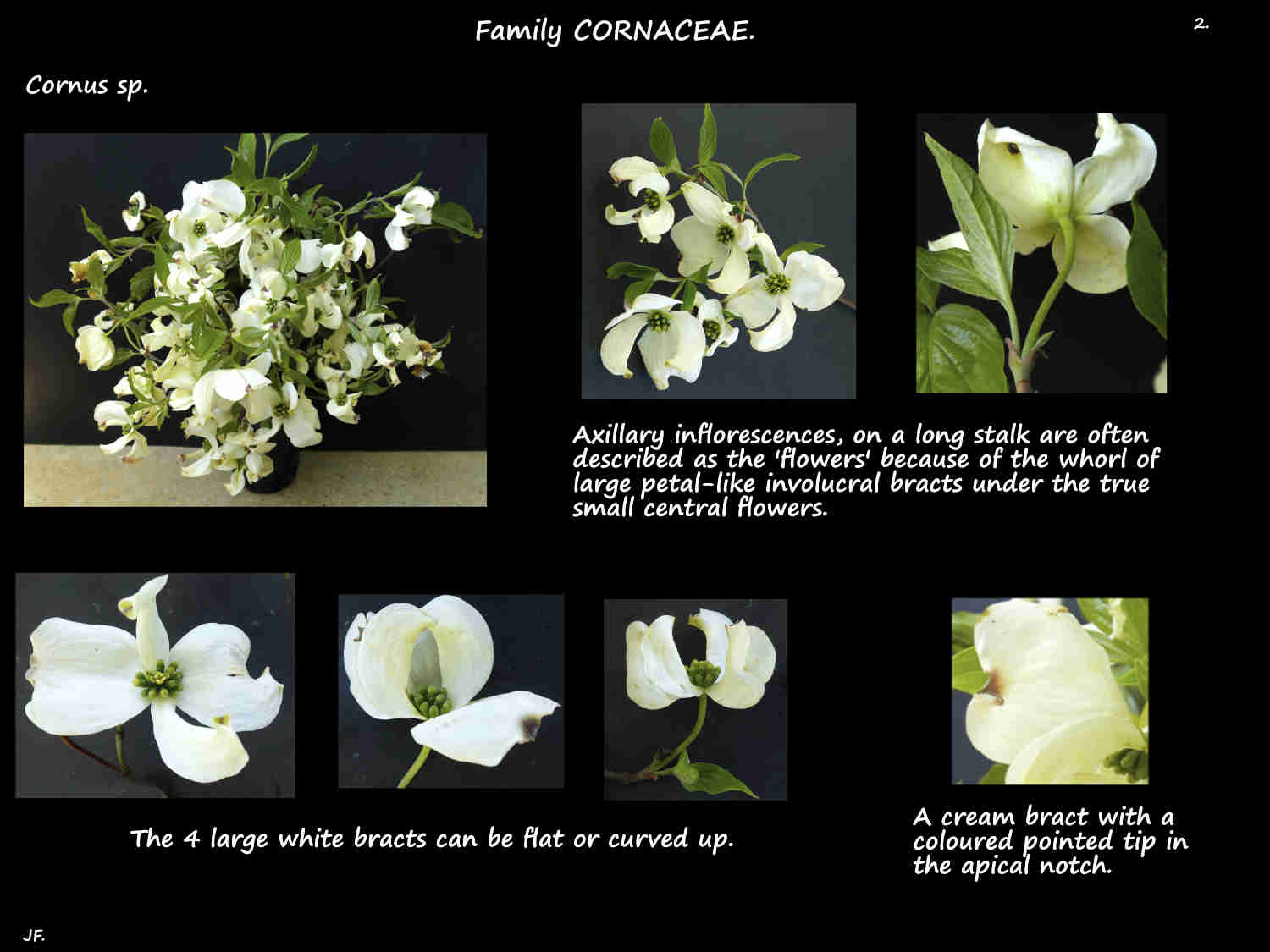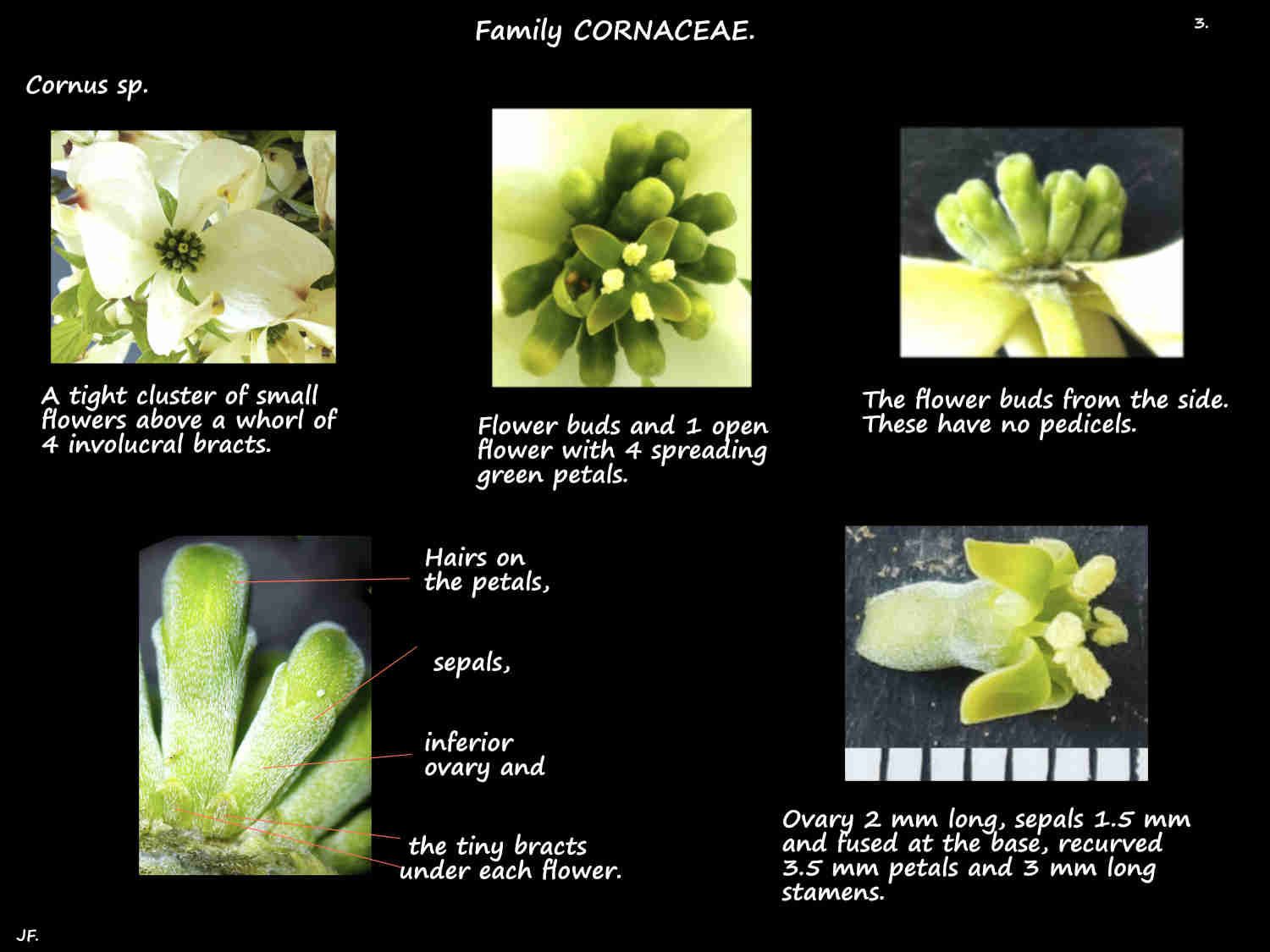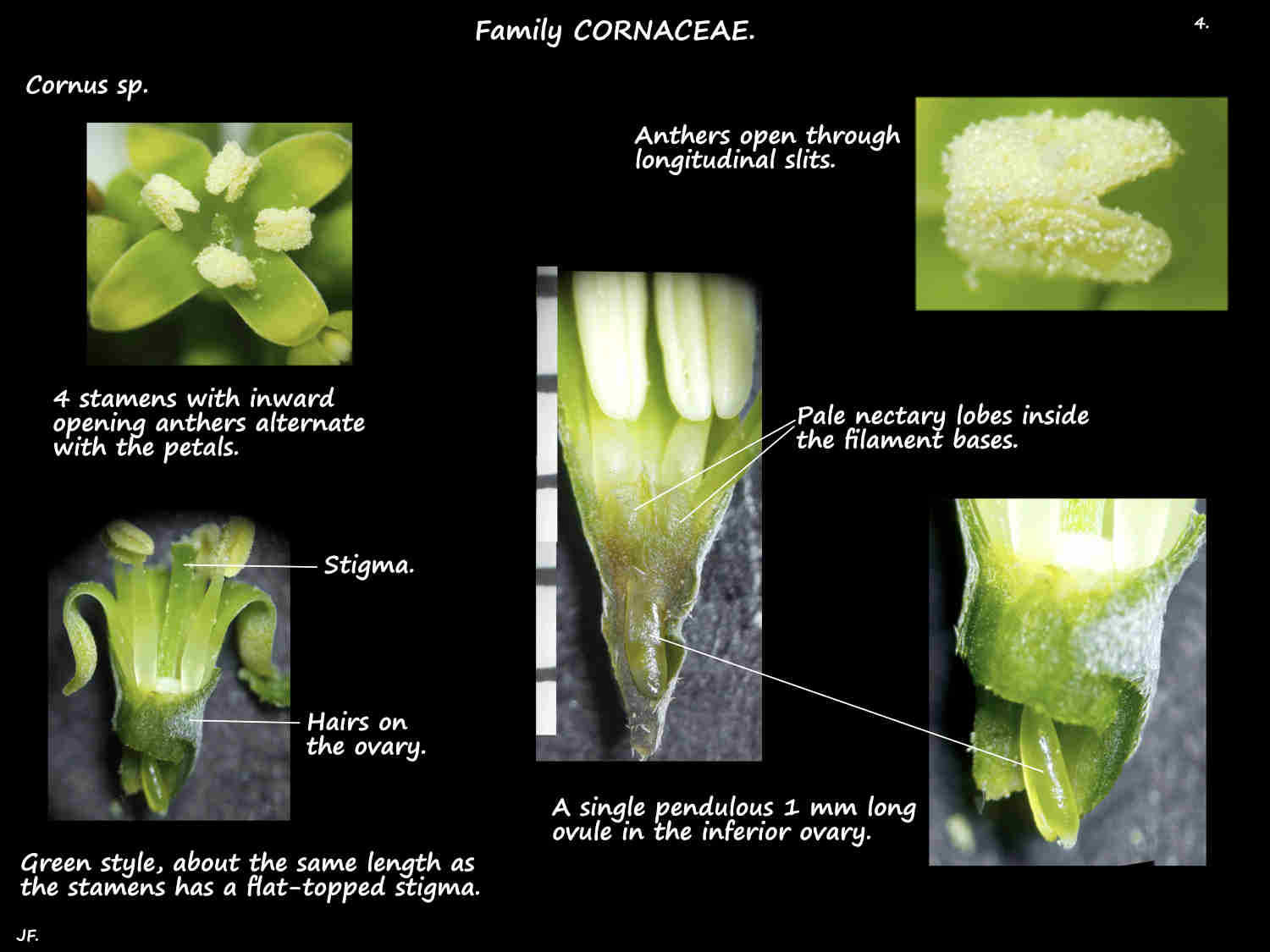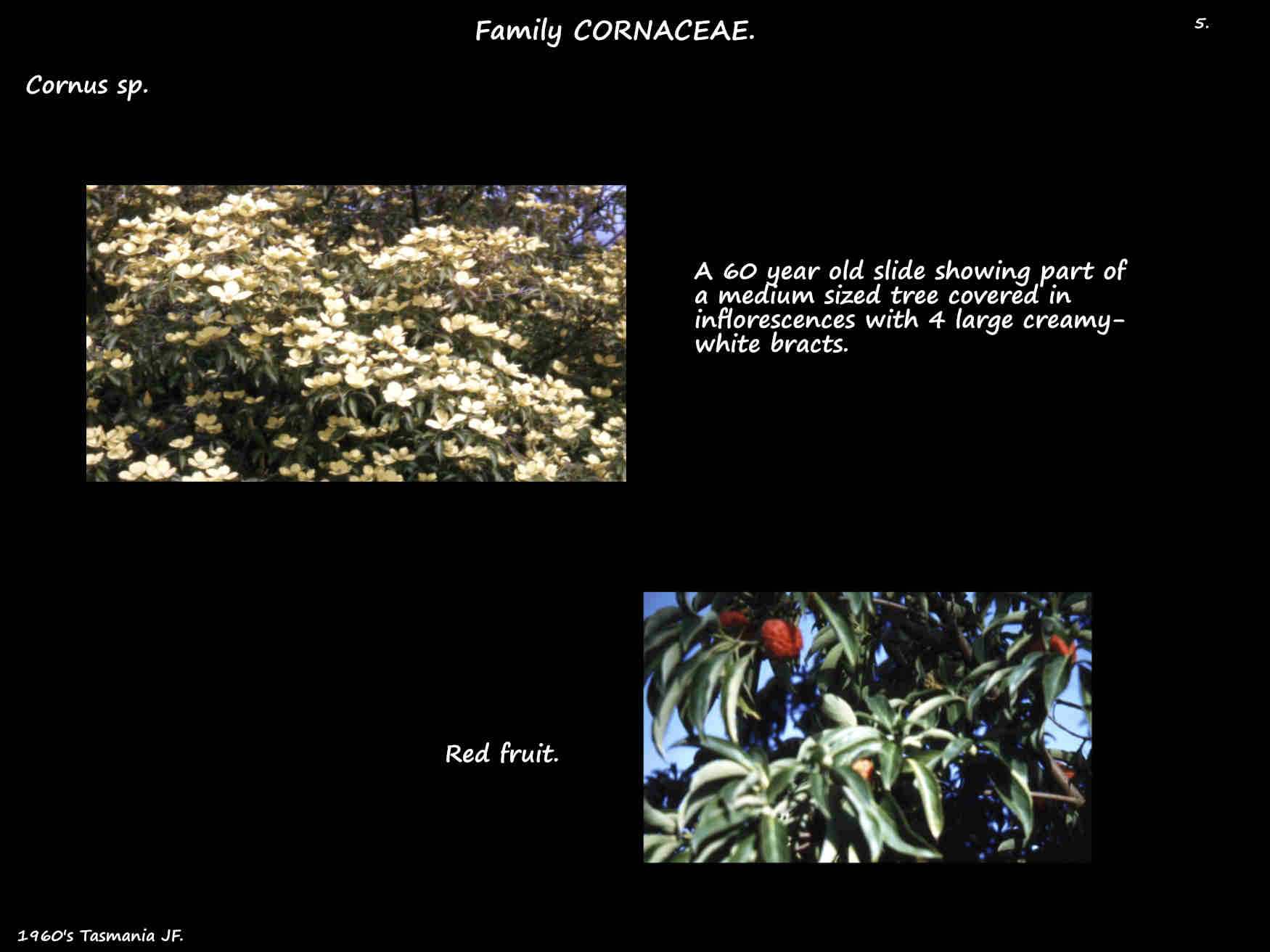Cornus.
The Cornus genus is seen divided into up to 10 subgenera with 30 to 85 species.
Mabberley recognises 60 species in 2 groups one with 15 clear-cut red-fruited species and the other with 45
blue (or white) fruited species that are difficult to distinguish.
The Cornus plants have descriptive names such as Common, Stiff, Brown, Smooth, Round-leaf or Pacific Dogwood.
Most are medium sized bushy trees or shrubs with some smaller subshrubs and occasionally a creeping ground-cover.
Small shrubs are from 1.5 to 2 m high and wide while the largest trees can be up to 20 (30) m high.
The usually straight trunk holds a rounded or pyramidal-shaped crown.
Some trees have horizontal branches in whorls that form flat tiers.
Mature grey or reddish-brown bark is furrowed or cracked into small segments.
Young twigs can be green, purple, orange or red with no hairs or short hairs that are gradually lost.
Hairs may be simple and lying along the surface or T-shaped with short arms.
Leaves are mostly opposite (and decussate in 4 ranks) but are sometimes sub-opposite to alternate.
Up to 15 cm long and 7.5 cm wide they are usually on a grooved petiole up to 2.5 cm long.
The mostly simple blades are ovate, elliptic or lanceolate with a pointed tip.
The margin is usually smooth but occasionally it has small teeth and it is often wavy.
The upper surface may be smooth or have some hairs.
Young leaves usually have hairs on the lower surface which are often lost over time.
In cold weather leaves often turn red, bronze, purplish, orange or yellow.
The pinnate veins are a feature of the genus with 3 to 7 pairs of lateral veins that all arise from the lower part of midrib,
arch out and up then bend back towards the midrib.
Genus descriptions almost always say that stipules are absent but they do occur in a few species and cultivars (e.g. Cornus
nuttallii has stipules that leave a scar around the stem and Cornus alba ‘Byboughen’ has 2 mm long lanceolate stipules).
Axillary or terminal inflorescences, on a peduncle may be individual flowers in a loose or dense cluster often with involucral bracts.
Others are in a variously branched inflorescence usually with the terminal flower on each branch opening first.
An inflorescence can be up to 6 cm across and have up to 100 flowers.
Bracts may be absent or very small or there may be 4 (6) large ones that can be mistaken for the petals of a large flower.
Large flat or curved, oval or round bracts can be up to 5 cm long and they have a notch at the tip.
The white, cream, yellow, pink to red bracts may fall early or persist.
The small true flowers have no pedicel or one up to around 1 cm long and both the stems and pedicels have hairs.
The mostly bisexual flowers can be up to around 7 mm across and 5 mm long.
A few species have a hypanthium of fused sepal, petal and stamen bases.
The calyx, from 0.1 up to 1.5 mm long has 4 sepals that alternate with the petals.
The green or yellow (sometimes ageing to red) sepals often have simple or T-shaped hairs.
The 4 separate, spreading or backward curved petals are up to 4.5 mm long and often green.
They may have no hairs or a few, similar to those on the sepals, on the outer surface.
The 4 free stamens that alternate with the petals extend to or just past the corolla.
The 2 to 4 mm long filaments hold anthers that open through longitudinal slits.
Just inside the filament bases the annular nectary disc, with or without lobes, sits on top of the inferior ovary.
The ovary, a few mms long consists of 2 fused carpels covered in T-shaped hairs and simple ones lying flat on the surface.
The green style, up to 3 mm long holds a small stigma just below or above the anthers.
The fruit are drupes up to 9 mm long with some flower parts still attached.
Covered in fine hairs they can be red to purplish or white or blue.
They have 1 (2) hard stones with 1 (2) seeds and the stones can be smooth or furrowed.
A number of species such as Cornus florida are used in gardens for the ‘flowers’ while others are grown for the coloured stems.
There are also a number of cultivars many with variegated leaves.
Some species, such as Cornus sericea are highly variable with a number of forms.
J.F.

